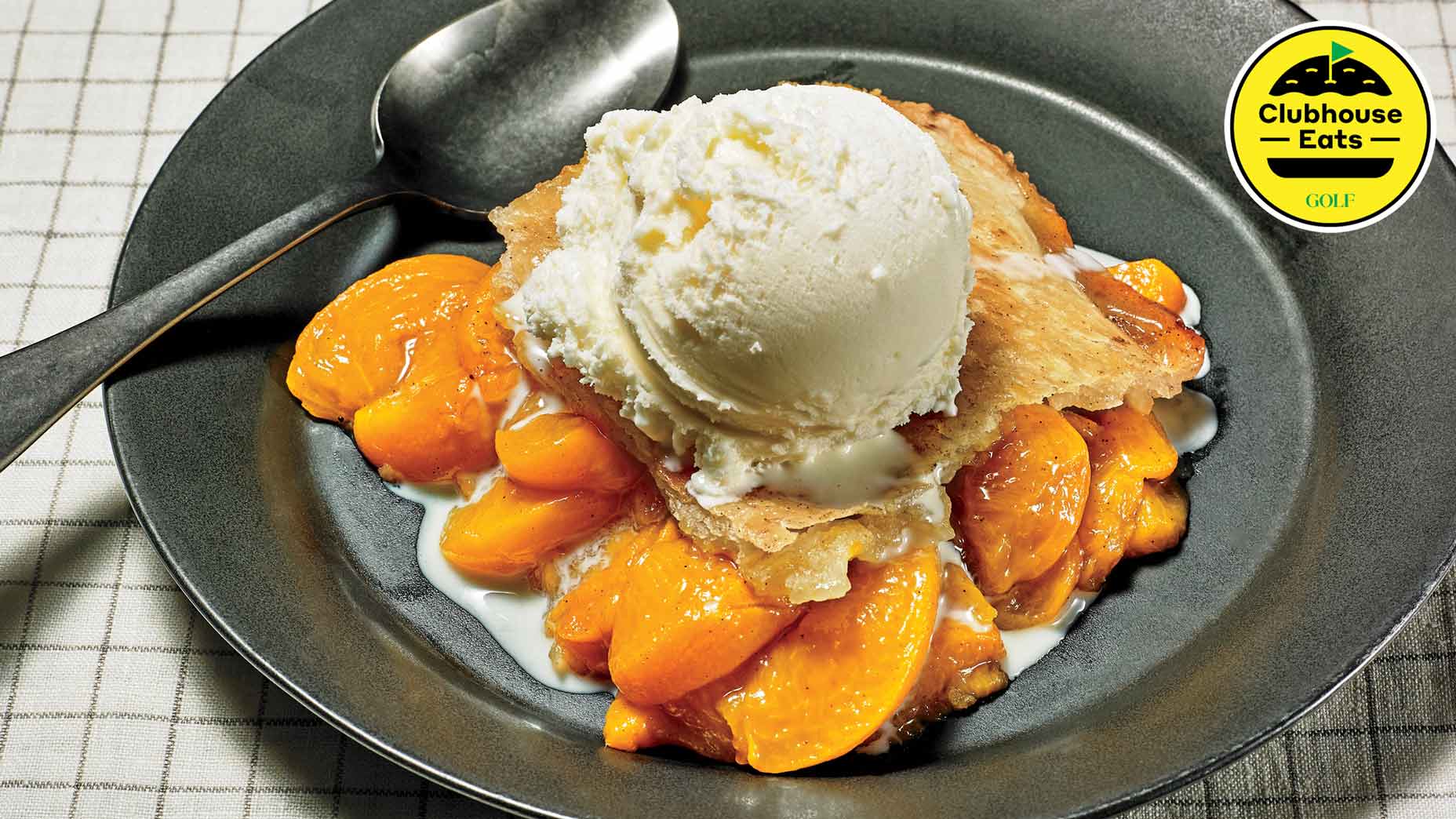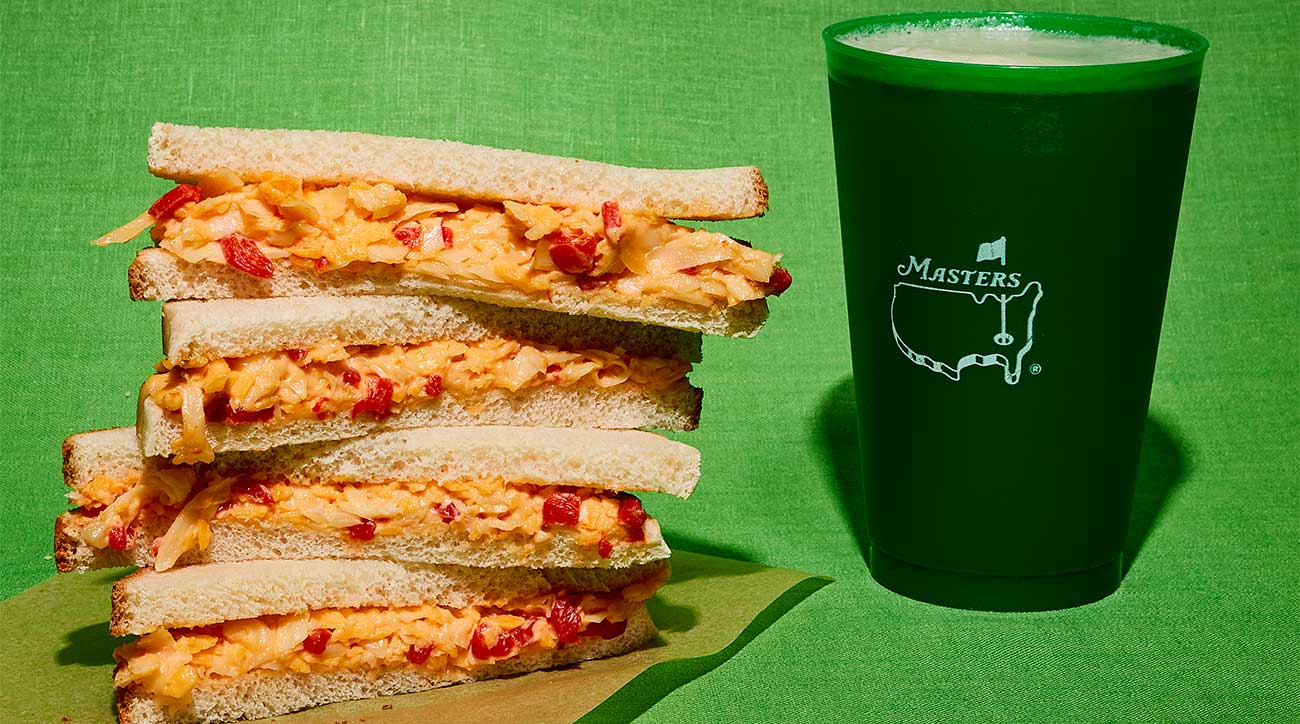The secret to making Augusta National-grade peach cobbler, according to a Master Chef

Vanilla ice cream is the perfect cobbler companion. Good thing calories don’t count in Georgia.
Jeffrey Westbrook
Welcome to Clubhouse Eats, where we celebrate the game’s most delectable food and drink. Hope you brought your appetites.
***
If pimento cheese is the unofficial sandwich of the Masters, then there’s no question that another Southern staple, peach cobbler, gets the nod for top dessert.
The sweet treat is a longtime favorite on Augusta National’s clubhouse menu, and while the green jackets are predictably tight-lipped about their own cobbler recipe, one local source who has sampled the adored dish says it’s the deliciously flaky crust that blends effortlessly with the fruit that really makes the ANGC cobbler sing.
To try it for yourself, you’ll need to land a coveted ticket to the tournament. Or make fast friends with an Augusta member. Meantime, though, nothing says you can’t whip up a version of your own.
Derin Moore is a Certified Master Chef. He is also the executive chef at Reynolds Lake Oconee, roughly 80 miles west of Augusta. We asked for his help with a peach cobbler primer. Here are his answers to five fundamental questions about the dish.
1. What’s the difference between a cobbler and a pie?
A pie has a crust on the bottom, uses flaky pie pastry and can be either sweet or savory. Though a cobbler can be savory, it is primarily a baked fruit dessert, topped with a sweet biscuit. It has no bottom crust or dough.
2. Can I use canned peaches if I can’t find fresh ones?
You can substitute canned fruit depending on your desired results. But fresh seasonal fruit is always better. If you’re using fruit that’s out of peak season, I recommend going with an IQF, (individually quick frozen) product. This fruit is picked and frozen at the peak of freshness and it usually yields an end product that’s similar to what you’d get with fresh fruit.
3. How much sweetener should I use, and does it have to be sugar?
There are really no rules, just preferences. Cane sugar is best. But other sweeteners can be used for dietary reasons. The best rule of thumb would be to use fruit at the peak of seasonal freshness and let that natural sweetness be the star. Little other sweetener is needed as the biscuit topping would help to further sweeten the dish. Have some fun and experiment, using a combination of brown and white sugar, honey, maple syrup, agave, sorghum, or a sugar substitute of your choice.
4. What kind of fat should I use for the dough?
The fat does matter depending on the results you want to achieve. Butter contains milk solids, which caramelize during cooking to achieve a golden color along with a rich flavor. Fats like lard, shortening and oils do not contain milk solids so the end result will be less golden, but still flavorful.
5. Any other critical do’s and don’ts?
While making your biscuit dough, take care not to overwork it. It will become tough. Also, keep your fat very cold and flake it into the flour in pea-sized pieces. As cold butter melts in the heat of the oven, it produces steam that expands between the layers of dough, which helps make a flaky biscuit. Which brings me to another recommendation: keep your fruit mixture cold before you top it with your biscuit dough. This will prevent the fat from melting right away and help produce a nice, flaky biscuit on top.
Gear up in Masters green!
Explore GOLF’s Pro Shop













